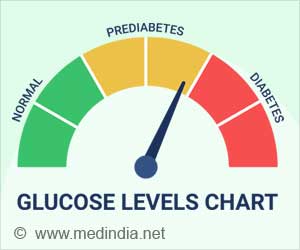Harmful PFAS chemicals in U.S. drinking water could be linked to thousands of cancer cases annually, highlighting a growing public health concern.
- PFAS in drinking water are linked to increased risks of digestive, respiratory, and thyroid cancers
- Men and women show different cancer risks due to PFAS exposure
- The EPA's stricter PFAS guidelines emphasize the need for urgent public health action
Cancer incidence associated with PFAS contamination of drinking water in the USA
Go to source). Recent research highlights the connection between harmful chemicals known as per- and polyfluoroalkyl substances (PFAS) in drinking water and increased cancer rates in the United States. These chemicals have been linked to cancers affecting the digestive, endocrine, and respiratory systems, among others. The study also found differences in cancer risks between men and women.
TOP INSIGHT
Did You Know?
PFAS exposure could contribute to thousands of U.S. cancer cases every year! #foreverchemicals #cancerrisk #medindia
What Are PFAS and Why Are They Harmful?
PFAS are synthetic chemicals used since the 1940s in products like non-stick cookware, waterproof clothing, and firefighting foam. They are called "forever chemicals" because they don’t break down easily in the environment, leading to widespread contamination. Drinking water has been identified as a major source of PFAS exposure.Research shows that PFAS may cause cancer by disrupting hormones, altering DNA, and increasing oxidative stress in the body. Despite growing concerns, studies focused on PFAS exposure in the U.S. remain limited, especially those examining specific cancer types.
PFAS in Water Linked to Cancer Rates
The research, published in the Journal of Exposure Science & Environmental Epidemiology, analyzed cancer rates across U.S. counties from 2016 to 2021. Using data from the National Cancer Institute and the Environmental Protection Agency (EPA), the study compared cancer incidence with PFAS levels in drinking water.Cancer data were collected from 22 states, covering about half the U.S. population. Researchers measured PFAS levels in public water systems during two monitoring periods (2013–2015 and 2023–2024). Advanced statistical methods were used to adjust for socioeconomic and environmental factors.
The study revealed that exposure to PFAS is linked to an increased risk of various cancers, including:
- Digestive system cancers: Colorectal and liver cancers.
- Respiratory cancers: Lung cancer.
- Endocrine cancers: Thyroid cancer.
- Oral cancers: Cancers of the oral cavity and pharynx.
Gender Differences in Cancer Risks
Men and women exhibited different cancer risks related to PFAS exposure:- Men: Elevated risks of urinary, brain, and soft tissue cancers.
- Women: Higher risks of thyroid and oral cancers.
The study estimates that between 4,600 and 6,800 cancer cases annually in the U.S. could be attributed to PFAS in drinking water. This highlights the urgent need for stronger regulations and public health initiatives to reduce PFAS exposure.
Recently, the EPA has implemented stricter guidelines for PFAS levels in drinking water. However, this study emphasizes the necessity of effectively safeguarding communities from these harmful substances.
While the findings of this study are significant, further research is essential to comprehend how PFAS exposure contributes to specific cancers. Additionally, identifying high-risk populations and areas is crucial for developing better strategies to mitigate PFAS contamination.
By addressing these issues, policymakers and scientists can collaborate to lessen the health risks associated with PFAS and enhance public health outcomes.
Reference:
- Cancer incidence associated with PFAS contamination of drinking water in the USA - (https://www.thelancet.com/journals/lanonc/article/PIIS1470-2045(25)00011-7/abstract)
Source-Medindia
 MEDINDIA
MEDINDIA





 Email
Email










